
Concept explainers
Cash flow statement is a part of financial statement which reflects the
The Preparation of Cash flow Statement under indirect method.
Want to see the full answer?
Check out a sample textbook solution
Chapter 16 Solutions
FUNDAMENTAL ACCOUNTING PRINCIPLES
- explain why preferred stock is referred to as a "hybrid security"?arrow_forwardBriefly recap what is meant by "the preemptive right to purchase common stock"? Explain the concept of Stock-Appreciation Rights (SARs).arrow_forwardWhat's the difference between calculating EPS for a simple capital structure versus a complex capital structure?arrow_forward
- In the first two years of operations, a company reports taxable income of $115,000 and $165,000, respectively. In the first two years, the tax rates were 38% and 32% respectively. It is now the end of the third year, and the company has a loss of $160,000 for tax purposes. The company carries losses to the earliest year possible. The tax rate is currently 25%. Required How much tax was paid in year 1 and year 2? Compute the amount of income tax payable or receivable in the current (third) year.arrow_forwardQuestion 22 (18 points) Problem 2 – Accounting Changes (18 marks) During the audit of Hoppy Ending Brewery for the fiscal year ended June 30, 2027, the auditors identified the following issues: a. The company sells beer for $1 each plus $0.10 deposit on each bottle. The deposit collected is payable to the provincial recycling agency. During 2026, the company had recorded $12,000 of deposits as revenue. The auditors believe this amount should have been recorded as a liability. b. The company had been using the first-in, first-out cost flow assumption for its inventories. In fiscal 2027, management decided to switch to the weighted-average method. This change reduced inventory by $25,000 at June 30, 2026, and $40,000 at June 30, 2027. c. The company has equipment costing $6,000,000 that it has been depreciating over 10 years on a straight-line basis. The depreciation for fiscal 2026 was $600,000 and accumulated depreciation on June 30,…arrow_forwardLes Mills Ltd.'s policy is to report all cash flows arising from interest and dividends in the operating section. Les Mills activities for the year ended December 31, 2026, included the following: • Income tax expense for the year was $30,000. • Sold an investment at FVOCI for $45,000. The original cost of the investment was $52,000. • Depreciation expense for the year was $19,000. • Sales for the year were $1,030,000. • Selling and administration expenses for the year totaled $240,000. • Les Mills cost of goods sold in 2026 was $315,000. • Interest expense for the period was $12,000. The interest payable account increased $5,000. • Accounts payable increased $20,000 in 2026. • Accounts receivable decreased $36,000 in 2026. • Les Mills inventory increased $13,000 during the year. • Dividends were not declared during the year; however, the dividends payable account decreased $5,000. Required Prepare the cash flows from operating activities…arrow_forward
- The following is an excerpt from a company's financial records at year-end. Balance in CAD US dollars chequing account. $10,000 Cash in sinking fund account for a future repurchase of common shares. 50,000 Term deposit maturing 100 days after the year-end. 78,000 Bank loan (60,000) Cash restricted for plant expansion. 45,000 Cash on hand. 7,800 Bank overdraft - part of cash management system (9,000) The "cash and cash equivalents" in the cash flow statement will be: Question 20 options: ($51,200) $8,800 ($1,200) $17,800arrow_forwardWhat are investing activities? Question 19 options: Activities involving the acquisition and disposal of long-term assets and other investments. Activities involving the principal revenue-producing activities of the entity. Activities involving changes in the size and composition of the equity's borrowings. Activities that do not involve cash.arrow_forwardWhat are financing activities? Question 18 options: Activities that result in changes in the size and composition of the contributed equity and borrowings of the entity. Activities involving the principal revenue-producing activities of the entity. Activities involving the acquisition and disposal of long-term assets.arrow_forward
- If a company has gaps between the change in cash and the net income for the year: Question 17 options: the financial statement notes provide explanation for the sources of these changes. the statement of cash flow and balance sheet provide explanation for these changes. the statement of cash flow provides explanation of the sources of these changes. the income statement provides sufficient explanation for the sources of these changes.arrow_forwardIf a company has gaps between the change in cash and the net income for the year: Question 17 options: the financial statement notes provide explanation for the sources of these changes. the statement of cash flow and balance sheet provide explanation for these changes. the statement of cash flow provides explanation of the sources of these changes. the income statement provides sufficient explanation for the sources of these changes.arrow_forwardA company had taxable income of $2 million in fiscal 2026 and paid taxes of 0.7 million; the company incurred a loss of $8 million in fiscal 2027 when the tax rate is 50%. How much refund is the company entitled to? Question 16 options: $3.85 million $4 million Nil $0.7 millionarrow_forward
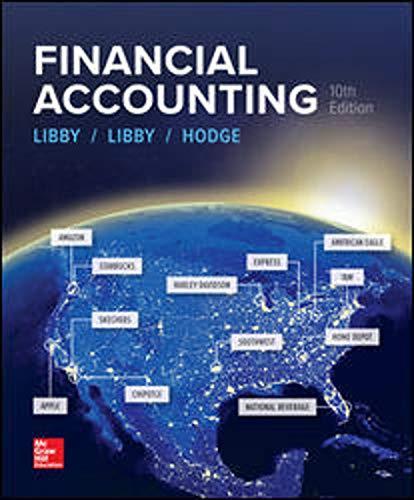
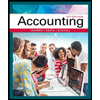 AccountingAccountingISBN:9781337272094Author:WARREN, Carl S., Reeve, James M., Duchac, Jonathan E.Publisher:Cengage Learning,
AccountingAccountingISBN:9781337272094Author:WARREN, Carl S., Reeve, James M., Duchac, Jonathan E.Publisher:Cengage Learning,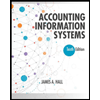 Accounting Information SystemsAccountingISBN:9781337619202Author:Hall, James A.Publisher:Cengage Learning,
Accounting Information SystemsAccountingISBN:9781337619202Author:Hall, James A.Publisher:Cengage Learning,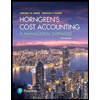 Horngren's Cost Accounting: A Managerial Emphasis...AccountingISBN:9780134475585Author:Srikant M. Datar, Madhav V. RajanPublisher:PEARSON
Horngren's Cost Accounting: A Managerial Emphasis...AccountingISBN:9780134475585Author:Srikant M. Datar, Madhav V. RajanPublisher:PEARSON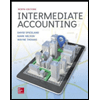 Intermediate AccountingAccountingISBN:9781259722660Author:J. David Spiceland, Mark W. Nelson, Wayne M ThomasPublisher:McGraw-Hill Education
Intermediate AccountingAccountingISBN:9781259722660Author:J. David Spiceland, Mark W. Nelson, Wayne M ThomasPublisher:McGraw-Hill Education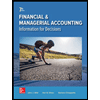 Financial and Managerial AccountingAccountingISBN:9781259726705Author:John J Wild, Ken W. Shaw, Barbara Chiappetta Fundamental Accounting PrinciplesPublisher:McGraw-Hill Education
Financial and Managerial AccountingAccountingISBN:9781259726705Author:John J Wild, Ken W. Shaw, Barbara Chiappetta Fundamental Accounting PrinciplesPublisher:McGraw-Hill Education





